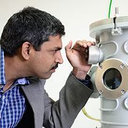Citrinin and endosulfan induced teratogenic effects in Wistar rats.
Λέξεις-κλειδιά
Αφηρημένη
Dietary exposures to food pollutants such as mycotoxin(s) or pesticide(s) are most significant due to their adverse effects on the production and reproduction in animals and the human population. The present investigation was conducted to evaluate the teratogenic potential of citrinin (CIT) and endosulfan either alone or in combination in pregnant rats during gestational days 6-20. Endosulfan (1 mg kg(-1) body weight, by oral intubation) and CIT (10 mg kg(-1) feed, through diet) when administered either alone or in combination in pregnant rats caused significant teratogenic effects in the developing fetuses. There was no maternal mortality, however, reduced maternal weight gain and number of live fetuses and increased fetal resorptions were recorded in all the treated groups. The fetal body weights and crown to rump lengths were significantly decreased and the per cent gross, visceral and skeletal anomalies were significantly increased in the fetuses of dams of all the treated groups. The internal hydrocephalus, cerebellar hypoplasia, microphthalmia, contracted and notched kidneys, multilobulated liver, dilated renal pelvis, incomplete ossification of skull bones, rib anomalies and sacral and caudal vertebrae agenesis were the important fetal malformations. The occurrence of fetal gross, skeletal and visceral malformations was more severe in the combination group, suggesting an additive interaction of CIT and endosulfan in inducing developmental toxicity in Wistar rats.



